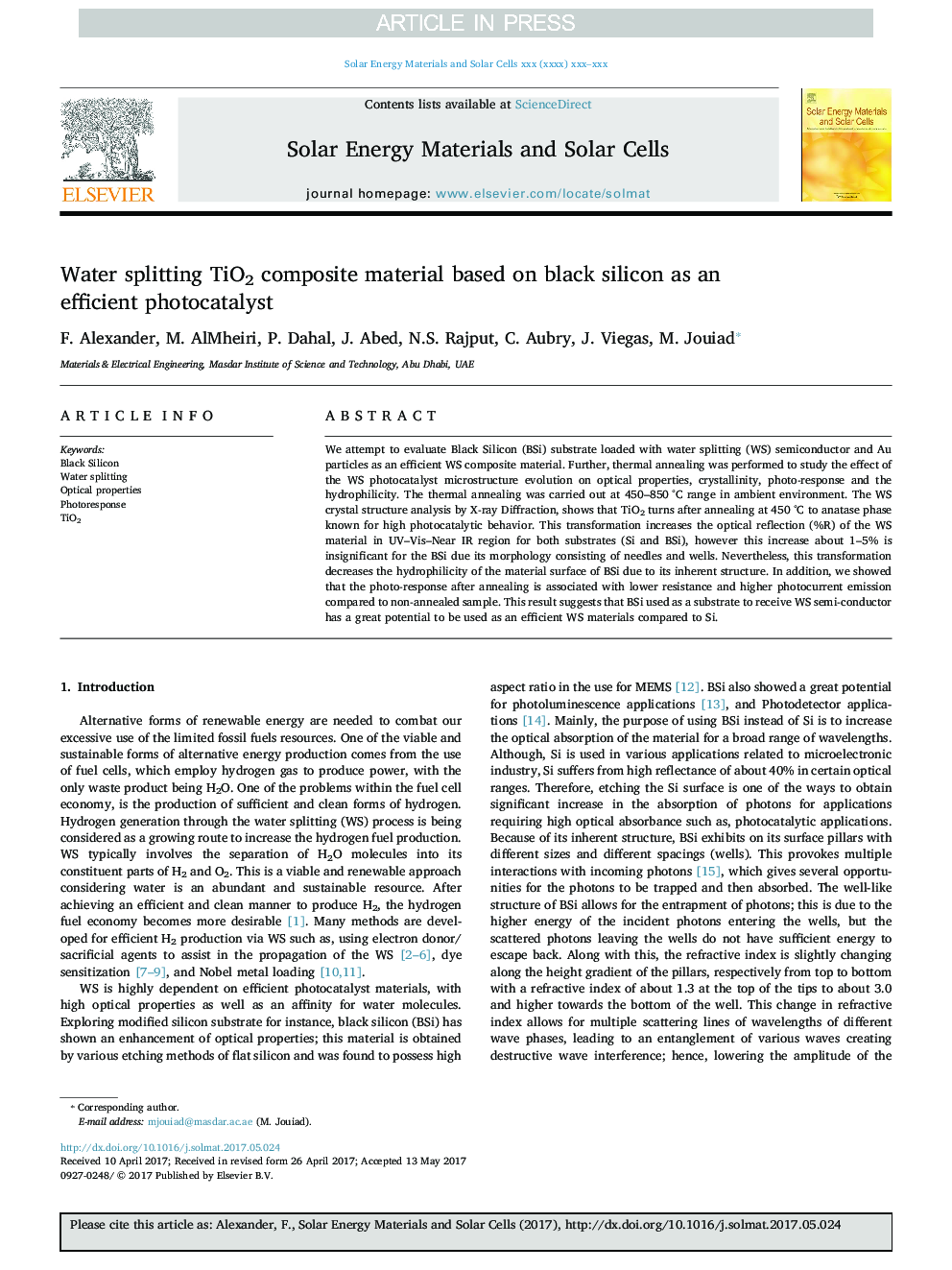| Article ID | Journal | Published Year | Pages | File Type |
|---|---|---|---|---|
| 6534218 | Solar Energy Materials and Solar Cells | 2018 | 7 Pages |
Abstract
We attempt to evaluate Black Silicon (BSi) substrate loaded with water splitting (WS) semiconductor and Au particles as an efficient WS composite material. Further, thermal annealing was performed to study the effect of the WS photocatalyst microstructure evolution on optical properties, crystallinity, photo-response and the hydrophilicity. The thermal annealing was carried out at 450-850 °C range in ambient environment. The WS crystal structure analysis by X-ray Diffraction, shows that TiO2 turns after annealing at 450 °C to anatase phase known for high photocatalytic behavior. This transformation increases the optical reflection (%R) of the WS material in UV-Vis-Near IR region for both substrates (Si and BSi), however this increase about 1-5% is insignificant for the BSi due its morphology consisting of needles and wells. Nevertheless, this transformation decreases the hydrophilicity of the material surface of BSi due to its inherent structure. In addition, we showed that the photo-response after annealing is associated with lower resistance and higher photocurrent emission compared to non-annealed sample. This result suggests that BSi used as a substrate to receive WS semi-conductor has a great potential to be used as an efficient WS materials compared to Si.
Related Topics
Physical Sciences and Engineering
Chemical Engineering
Catalysis
Authors
F. Alexander, M. AlMheiri, P. Dahal, J. Abed, N.S. Rajput, C. Aubry, J. Viegas, M. Jouiad,
